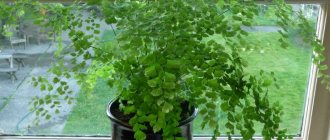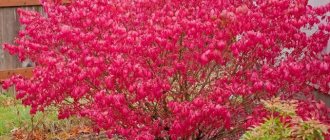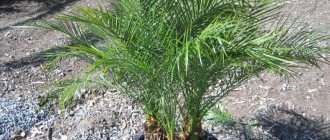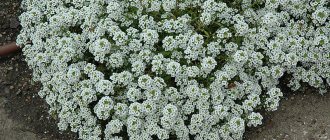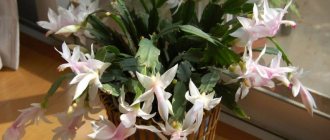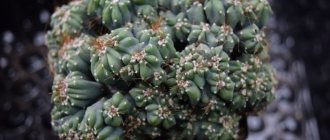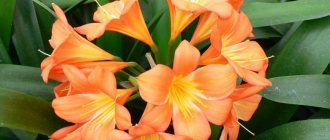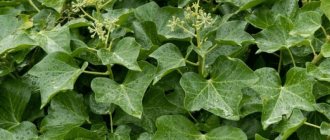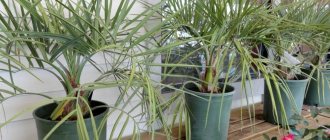Types of euonymus with photos and names
The Latin name of the euonymus - Evonymus - combines 2 Greek words - “good” and “name”, as a result, literally, it is a flower “with a good name”. Slavic tribes began to call the shrub the euonymus, to whom the plant was also known as bruslina, brusklet, kizlyanka, night blindness, witch's earrings, wolf's bast, privet.
Now these names are practically not used. In southern Russia, the shrub is still called pseudolaurel.
There are about 220 species in the genus Celastraceae, of which about 130 are evergreen. A mature tree reaches more than 4 m in height. The plant's homeland is considered to be the temperate climatic zones of Asia, China, and the Himalayas; the flower is widely distributed in Australia, Europe, and South America. Up to 20 species can be found in the forests of Russia and Ukraine.
Most often grown at home:
- rooting euonymus (radicans) or Fortune (Euonymus fortunei), which does not exceed 50-60 cm in height. The plant has small ovoid varnished leaves and a dense crown with aerial roots at the nodes of the branches;
- Japanese euonymus (Euonymus japonica) is a shrub with serrated elliptical leaves with yellow, golden or white spots, not exceeding 8 cm in length. Euonymus has few flowers, they are small, pale yellow, collected in axillary inflorescences. After flowering (in June-July), leathery boxes of an orange-pink hue are formed in their place.
Such types of shrubs as European euonymus, dwarf euonymus (compactus) and winged euonymus (alatus) are less common in everyday life. They are often grown under the “mix” brand.
It is believed that it is difficult to make euonymus bloom indoors, so it is not cultivated as a flowering shrub, but is grown mainly for its beautifully colored foliage.
Description
The Japanese euonymus japonicus is valued primarily for its impressive decorativeness and ability to grow and develop safely both indoors and outdoors.
The decorative effect of the plant is given by its crown - lush, bright, and unusual in color. Euonymus has dark green leaves with pointed ends and a light border. The leaves are impressive in size and have a fleshy, dense structure. The plant is evergreen.
In addition to foliage, euonymus also boasts beautiful, decorative fruits. The shrub grows evenly, however, it adds more in the spring. Over the course of a year, the increase in height ranges from 15 to 20 cm. In nature, the Japanese euonymus can reach 7 meters in height.
Flowering is observed in mid-summer: the flowers are beautiful, collected in numerous panicles of yellow-green color. The berries appear in September and the fruiting period lasts until mid-October. Look at the photo of this wonderful plant.
The shrub tolerates unfavorable external conditions quite well: it does not care about air pollution, shading, or small plot sizes - even in such conditions, the euonymus manages to grow well and delight with its beauty.
It is worth knowing that Japanese euonymus is poisonous, so children and pets should not be allowed near it. Despite its toxicity, the plant is used in folk medicine.
Types and varieties
Thanks to the efforts of breeders, a large number of varieties and varieties of euonymus have been developed. This elegant culture can decorate any room with its presence. But flower growers should not forget about the toxicity of this type of plant. At home, you can plant a mix of euonymus varieties or choose one of its types.
- Japanese or variegated. The plant is a shrub with intense branching, its height does not exceed 70 centimeters. The culture is densely dotted with foliage having an elongated lanceolate shape. The plate is painted a rich green color and often has a light border. Small flowers of Japanese euonymus do not exceed 10 millimeters in diameter. The fruits are presented in the form of a light orange box.
- Fortune or rooting variegated euonymus. The plant looks like a low evergreen bush with creeping shoots. Its branching is weak, the stem is tightly covered with foliage. The small leaves are about 5 centimeters long and have a smooth, shiny surface. The plate is painted yellow, but it has a green tray. Fortunena is often grown in hanging pots. The variety produces pink fruits and deep orange seeds.
- Dwarf. The height of the crop does not exceed 100 centimeters. Its leaves are small, reaching 40 millimeters in length. The foliage is leathery, has pointed ends that bend downwards. The color of the leaf blades is light green with yellowish tint, while its bottom is usually olive. The bush has practically no trunk, the shoots are quite thin. This shade-loving representative of the flora is a frequent participant in bonsai.
- Winged. Euonymus of this species is a deciduous plant; it grows slowly and does not exceed 200 centimeters in height. On the shoots of the crop there are ribs that resemble wings. Dark green foliage turns crimson over time. The fruit is purple in color. This is a light-loving representative of the flora, which is able to survive in the shade, but at the same time losing its decorative effect.
Application in landscape design
The plant is suitable for creating a hedge, as well as a border frame for plantings. If you put together a mix of different varieties of euonymus, you can create a wonderful picturesque composition to decorate your garden.
Varieties with uniform green foliage are often used as a background for bright flowers. Living garden figurines are also formed from such plants.
In landscape design, the most common varieties of Japanese euonymus are:
- pseudolaurel;
- microphyllus;
- dwarf.
Pseudolaurus in our country is grown as a houseplant or greenhouse plant. It does not tolerate low temperatures, but is very decorative.
Microphyllus is famous for its beautiful variegated leaves. This euonymus forms a low bush - a maximum of half a meter in height. But the foliage and beautiful flowers make it very elegant and elegant.
The dwarf Japanese euonymus grows up to a meter and is most often planted in open ground. The leaves of this shrub have a double color: bluish below and bright green above.
Toxicity of euonymus
Euonymuses are poisonous. More precisely, their fruits, but not so much that one cannot grow this plant. Children need to be explained that fruits cannot be eaten. An adult needs to eat quite a lot to become poisoned, so the greatest risk is for children and animals.
Interesting Facts
Some plant species are gutta-perchenos. Gutta is found in all parts of the tree, especially in the bark.
Flower growers value euonymus for its ability to heal and disinfect indoor air.
Carefully! Euonymus is a poisonous plant; substances contained in the leaves and stems negatively affect the functioning of the cardiovascular system. Therefore, when caring for it, you need to use protective gloves. Do not allow pets to come into contact with the flower.
What does euonymus look like?
Euonymus is a shrub or tree no more than 1-1.5 m high. The shoots are long and can be erect, climbing or drooping. The stems are tetrahedral, with opposite leaves of monochromatic or variegated (up to 5-6 shades) color, which can vary depending on the time of year. The crown is thick and lush. Euonymus flowers are small, inconspicuous, and are of no decorative interest.
In addition to the variegated foliage, the exotic appearance of the plant is given by the leathery boxes that form in place of the flowers.
Popular varieties of house plants
Types and varieties of euonymus grown at home (description with photo):
- European euonymus is a bush-like tree up to 6 m tall, in which adult branches have a black tint, and young green shoots have cork growths. The leaves are large, leathery, and turn red in autumn. The ripe fruit is dark pink and orange. The species tolerates frost, drought and polluted air well;
- Euonymus compactus (dwarf) – no more than a meter tall. The variety is known for its small (up to 4 cm long), leathery, light green leaves, the tips of which become sharply pointed and the edges are slightly curved downwards. The leaves below are olive or bluish-green. There is almost no trunk, thin shoots. The plant is often formed as a bonsai and used in interior design. It loves watering, shade, is often susceptible to pests, and does not tolerate heat;
- Japanese euonymus is a well-branched shrub no more than 0.7 m tall and densely covered with green foliage, less often with a light border. The fruits have the shape of boxes of a pale orange or pinkish hue. The tree needs constant feeding and moderate watering. It reacts heavily to temperature changes and pest attacks. Extreme heat may cause leaf loss;
- Euonymus fortunena is a creeping, low (1-1.2 m) evergreen plant with weak branches. The leaves are small (about 5 cm in length), shiny. At home, it is grown in hanging pots. It has bright pink fruits and dark orange seeds;
- Winged euonymus is a slow-growing, light-loving, deciduous shrub 1.5-2 m high with purple fruits. On the shoots, the ribs resemble wings. The dark green leaves turn crimson and bright scarlet in autumn;
- Euonymus Emerald Gold is a breeding hybrid, which is bred on the basis of euonymus fortune. It has variegated leaves up to 5 cm long. A groundcover representative of the flora, half a meter high, 1.5 m wide, without pruning, it is perfect for winter gardens and greenhouses. In autumn, the leaves take on a chocolate or reddish hue.
Euonymus seedlings can be purchased at nurseries or online plant stores. The price will depend on the type, variety and height of the specimen. The cost of dwarf specimens 20-30 cm high is approximately 600-700 rubles, and 80-100 cm high can reach several thousand.
Varieties
There are many types of euonymus. Let's look at the most common ones.
• Warty euonymus is a shrub about one and a half meters tall, its shoots have numerous thickenings similar to warts. The shrub is slow-growing, unpretentious and frost-resistant.
• European euonymus is a deciduous plant. It can be a shrub up to three meters high or a tree reaching eight meters. The specific form depends on the plant variety and its growing conditions. Frost resistance is not high, but can withstand short-term temperature drops of minus fifteen degrees.
• Fortune's euonymus is a creeping shrub reaching a height of no more than half a meter. His homeland is China. The plant is decorative and has beautiful leaves. Fortune's euonymus is unpretentious, frost-resistant, but light-loving.
• Japanese euonymus is a close relative of the previous species, but grows in Japan. In garden conditions it can reach seven meters. The leaves are large and dense, with a light-colored border.
Euonymuses are grown as garden ornamental plants. Of the named species, only Japanese euonymus (Euonymus japonica) is suitable for indoor conditions. In addition to it, rooting euonymus is also grown as an indoor flower.
Plant care
Indoor euonymus is unpretentious, but you need to know a few tricks to make growing more effective.
Selecting a location
Experienced gardeners recommend choosing sunny, spacious rooms to keep the plant. It is better to keep the euonymus on the southeast and southwest window. It is believed that the tree tolerates partial shade and even shade well, but in order to maintain the diversity of leaves, constant sunlight is necessary at any time of the year.
It is good if it is possible to periodically ventilate the room without creating drafts. At the same time, euonymus loves high humidity in the room.
Temperature
To make the plant feel comfortable, it is better to keep it at a temperature no higher than 25° C in the warm season and no lower than 10-15° C in autumn and winter. During the cold period, you can create a tree in a cooler climate if it suddenly begins to lose leaves.
In summer, it is best to take the flower pot out into the open air and place it in bright sun. It is necessary to put it in the shade only when the ambient temperature rises above 27° C, otherwise the leaves will quickly dry out and fall off.
Watering
In the summer, the flower needs abundant watering - this is the main condition. But water should not be allowed to stagnate at the roots for a long time - this contributes to their rotting. Dry soil in a pot can cause leaves to fall off quickly.
In winter and autumn, the moisture supply should be halved; it is enough to lightly moisten the top layer of soil.
For irrigation, it is necessary to use only settled water at room temperature, because... cold, hard water from the tap can burn the roots and cause the plant to begin to lose its leaves. Periodic spraying and weekly warm showers are of great benefit.
Top dressing
If the flower is initially planted in fertile soil, then it does not need constant feeding. It is enough to water it once a month in spring and summer with complex mineral fertilizer. You can use manure infusion in a ratio of 1:10.
Crown formation
Pruning is carried out annually to form the crown and rejuvenate the plant during the growing season, while dry, weak, elongated shoots are removed.
Landing rules
- Plant in a well-lit place, but so that direct sunlight does not fall on the plant.
- When planting, prepare the following soil mixture: leaf and turf soil, humus, river sand. You can add peat.
- If the soil on the site is acidic, lime is added.
- Within 2 weeks after planting, provide the plant with proper care, including regular watering.
Usually, Japanese euonymus takes root well after planting and does not get sick.
Planting by seeds
The most troublesome and labor-intensive method of reproduction. Seeds need to be collected in the fall, subjected to stratification (it will take 5-6 months), germinate, and grown in home or greenhouse conditions for the first 2-3 years. And only then plant them in open ground. Germination is extremely low.
Planting by cuttings
Gardeners prefer propagation by cuttings. What is needed for this? In autumn, select several top young and strong shoots. Each should have 1 bud and 3 internodes. Place in a glass with a rooting agent solution (Kornevin, for example) for half an hour. Plant in a pot with pre-prepared soil mixture. Grow at home during winter. Place in open ground in the spring, when warm weather sets in.
Planting seedlings
The peculiarity of Japanese euonymus is that it can be planted in open ground almost throughout the entire season - from May to September. To do this, dig a hole, the size of which should be 3 times the volume and length of the plant’s rhizome. Next, drainage is organized from broken bricks or gravel, which is sprinkled with a thin layer of earth. The seedling is placed, the hole is filled with soil mixture prepared in advance.
Reproduction
It occurs in 2 ways: seed and vegetative.
Using the seeds that form in the boxes of faded euonymus, you can grow several specimens at the same time. Growing shrubs in this way has a big disadvantage - seedlings take a very long time to appear, so at home it is better to propagate the flower using cuttings.
Seeds
The soil for euonymus should be loose, slightly alkaline, well permeable to air, and rich in nutrients. A mixture of equal parts of turf soil, sand and humus is recommended. It is useful to add a small amount of loam to the substrate.
You can use soil for decorative foliage plants, which is sold in specialized stores.
For germination, you will need an airtight container into which moistened sand is poured and the seeds are placed. The tightly closed tray is placed in the refrigerator for 3 months for stratification.
After the expiration date, the container is taken out, opened, covered with glass and exposed to bright light to warm up.
The prepared soil is sterilized in the oven and heated planting material is laid out on it. Sprinkle with substrate and irrigate with a spray bottle. Cover with glass or film and expose to the sun until germination, which can last 3-8 weeks. As soon as 1 leaf appears on the shoots, they are picked into pots and placed in a permanent place. It is better to plant shallowly to allow the root system to develop.
Cuttings
To carry out cuttings, you will need an adult plant and a sharp knife. A cutting (5-7 cm long) is cut from the mother flower, preferably from the top. It is recommended to do this in August-September. For the seedling you need to build a mini-greenhouse. The shoot is buried in a mixture of sand and peat until roots sprout. As soon as it begins to grow, they dive into a permanent container.
Important! The pot for euonymus should be small to limit the growth of the root system. At the bottom it is necessary to arrange drainage from expanded clay or finely chopped red brick to prevent rotting of the roots due to stagnation of water. Euonymus can be propagated by cuttings in early spring.
Transfer
This plant needs to be replanted once every 2-3 years. In this case, the pot is taken not much larger than the previous one. The best soil is a mixture of turf, humus and leaf soil in a ratio of 2:1:1. To deoxidize the soil, you can add crushed chalk (5 g per 10 kg).
To make the transplant less painful, the roots are not completely cleared of soil, but the entire lump is transferred into a new container and, adding fresh substrate to the side and on top, lightly compact it. Spray, water the flower and place it in its usual place.
Difficulties in growing
A plant, especially an adult, may periodically experience problems.
| Problem | Cause | How to fight | Prevention |
| Leaves fade, curl, edges dry out | Too much sun rays | Shade | Choose the optimal location |
| Leaves fade, curl, edges dry out | Overmoistening | Let the earthen coma dry | Optimize the watering regime |
| Leaves fall, root system dies | Overmoistening | Dry the earthen lump | Optimize watering |
Diseases and pests
Like other plants, euonymus is affected by diseases and parasites. Many novice gardeners often have questions about why the leaves turn black or fall off.
| Pests | Manifestation | Struggle |
| Shchitovka | Falling and curling of leaves | Apply Actellik solution (0.15%), reduce air humidity. |
| Spider mite | Small mites and a thin thick web between the leaves | Clean the leaves from mites, treat with garlic infusion, spray periodically |
| Gray rot | Velvety gray or brown coating on leaves | Occurs due to excessive soil moisture, so reduce watering |
To protect themselves from possible difficulties, it is better for novice flower growers to purchase their 1 euonymus in a specialized store and learn how to properly care for it.
Growing conditions for indoor euonymus
Good quality lighting and cool maintenance throughout the year are vital for potted euonymus. As is access to fresh air.
Lighting and placement
In indoor format, euonymus is sensitive to direct southern sun, turns pale, and often reacts by curling leaves and accelerated drying of leaf tips when the light is too intense. But they also do not like strong shading, easily stretching out and losing varietal characteristics. The ideal place for euonymus in the interior is considered to be a western or eastern window, but non-variegated varieties can grow in the northern window. The euonymus can be moved deeper into the interior only in the summer near the southern windows.
